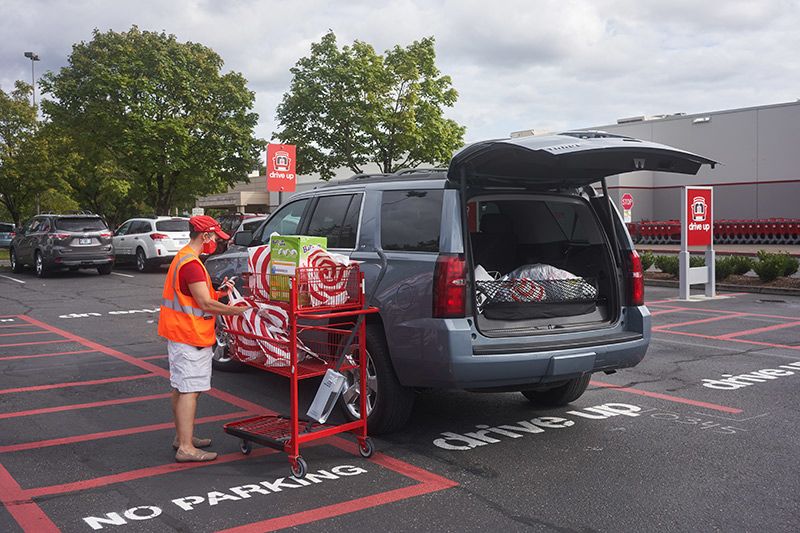When history writes the story of the pandemic, there won’t be just one story. Instead there will be hundreds, thousands of different stories of individuals and families and businesses, stories of struggle and survival, successes and defeats. Among the stories of businesses and their customers will be chapters on the increasing importance of customer service, adaptation, and the evolving role of contact centers in the quest to survive. Why should we care? Experts believe that the new perspectives, insights and best practices during the past year will survive long after the pandemic subsides.
Meeting the (pandemic) moment
Some surprising stories have to do with businesses—even entire sectors—that didn’t just survive but thrived in 2020, almost from the start of the pandemic. It wasn’t a given. Think back to February and March of 2020, spending dropped like a stone. Demand shifted. Supply chains were upended. Business ground to a halt. Grocery stores and others stayed afloat, restaurants struggled, and many small businesses soon closed. Entire contact centers quickly moved to a work-from-home model.
With so much uncertainty, planning was nearly impossible. It’s taken week by week, month by month, seeking new understanding of customers and finding new ways to connect with—and keep—them. Having to adapt to rapidly changing circumstances has involved finding ways, large and small, to change, pivot, evolve, innovate and experiment. Not only has this become the path to new insights and new ways of doing business and connecting with customers, it also has huge implications for brands—and contact centers—going forward, both in terms of opportunities and challenges.
Who’s been doing it best? Some of the most unexpected examples of not-just-surviving-but-thriving are home-related industry sectors, from DIY and appliances to furniture and accessories to all manner of home-associated contractors and small businesses. Adaptation and innovation seemed to meet rapidly changing market conditions early on. That, and an early recognition that consumers, suddenly faced with having to do nearly everything from home, began changing their view of “home.” Home was suddenly morphing from a stopover between the office and soccer practice to a warm and welcoming central hub for work, school, entertainment and well, all of life.
Coming home:
From ‘nesting’ to ‘home-basing’
With gatherings pretty much off the table across the board– workplace, sports stadiums, concerts, travel, theaters—consumers have found themselves at home most of the time. Astute companies soon picked up on the changing zeitgeist and then began driving the concept of home as destination and sanctuary, an entertainment hub.
Early examples:
Consumers jumped on board willingly or through necessity, and “nesting” has expanded into “home- basing,” which is driving DIY projects, remodeling, indoor/outdoor projects large and small. Purchases of home-related goods like furniture, accessories and appliances have surged, as has the demand for a wide range of home-related services, including designers, contractors, handymen, landscapers and others.
The business impacts have been far-reaching, including increasing sales of everything from throw pillows and home office furnishings to trampolines, hammocks and swimming pools. The number of people growing gardens, along with the sales of vegetable seeds, has skyrocketed. DIY, in particular, had led much of the way. Read NPR’s interesting takes on current DIY trends and how they are changing us.

Home-related spending and shopping habits, methods and preferences changed quickly. Research by JPMorgan Chase Institute reported, for example, that nationwide, groceries were the one constant source of spending growth during the pandemic, as other categories saw often-sharp declines. In the Columbus metro area of Central Ohio, not atypical among major cities included in the research, consumers spent less on things like leisure but more on home goods. Central Ohioans boosted online spending 35.6% year-over-year, while brick-and-mortar shopping declined 15.2%.
To be both comfortable and functional, homes have needed updating and refurnishing, and home-related businesses and sectors quickly responded. Along the way, new trends have emerged for attracting customers and meeting their changing needs, not the least of which is safety. Curbside delivery, more and different inventory, more “consultative” selling (by phone, text and webchat), and a complete revamping of safety procedures, not just in-store but as workers and delivery people go into homes, now part of everyday lexicon, have all gained asses prominence. The best customer experiences address their needs and make it easy for them to create safe, welcoming spaces.
Case in point: Columbus, Ohio-based discount retailer Big Lots, a company that appears to embody these current trends, from recognizing changing customer demands to meeting consumers where they are to adapting its operations to strengthen customer service. Big Lots has been breaking all kinds of company records, thanks to what CEO Bruce Thorn describes as “continued momentum from the COVID-induced nesting trend.” Net sales for the third quarter are up a record 18% over last year, as Big Lots continues to see a surge in interest in its stay-at-home products, furniture and furnishings – with people shopping in person at its 1,400 stores and a taking advantage of a number of new online options.
According to Thorn, "soft home" items like bedding and drapery sales are up 20% with furniture over 20% as well. Online shopping is up almost 50% for the quarter, and the company says it will likely deepen its reliance on curbside pickup and online purchasing, especially in view of a surging virus nationwide.
"We're seeing that as the COVID trend continues, there's new types of customers (focused on) value shopping, home shopping, home furnishing, making the home life a better one, the work life at home better, and definitely e-commerce…making it easier," Thorn said.
Implications for contact centers / CX
Obviously service—understanding the changing customer and responding accordingly—has become an even bigger driver of the ability of businesses to connect and thrive. For many, this has put a bright spotlight on the importance of their contact centers, many of which themselves had been newly dispensed to working from home.
Interaction volumes have frequently soared, which brought an immediate need to scale. But it has also meant different kinds of contact center inquiries and interactions, which often require a deeper understanding of products, an ability to do more complex problem-solving, and a need to make more detailed safety arrangements, for example , for home deliveries, home installations, and any kind of work being done in the home. Contact centers will tell you that they have also had to adopt a new appreciation for their changing (and often stressed) customers, which, in turn, has put new demands and new stressors on their agents.
For businesses where customers were accustomed to in-person interaction when shopping, relying on the expertise of in-store sales staff and/or preferring to see and touch merchandise, establishing new service connections and standards has been especially challenging. Even so, many home-goods and -services related businesses have managed to maintain–and even grow—by adapting to customers’ changing needs, habits, and preferences and to the demand to meet all public health and safety regulations. No one would dispute that the home-related boom has been amazing. But supply chain issues, delivery resources, health and safety demands and certainly not least, customers impatient with long delivery timelines, delays, and shortages, continue to complicate even the most committed customer service-centric businesses.
Customer service—including the CX provided by contact centers—continues to play a pivotal role, as businesses have experimented with things like curbside service, expanded delivery, white glove service and how to add value in new and innovative ways. And as consumers’ use of digital devices and platforms has skyrocketed, smart contact centers have found they can easily meet customer expectations for choices in digital channels, as they move beyond first-generation digital (email, chat) to next-gen digital, including social, messaging and mobile apps.Empire Today: Looking ahead
Empire Today is a company for which a large portion of its business already revolved around its signature Shop-At-Home® service. The company has continued to strongly encourage it, with modifications to adhere to the Centers for Disease Control and Prevention (CDD) guidelines. It has also has taken a number of measures to prioritize health and safety while fulfilling customer needs, from having most employees work at home to practicing social distancing and following hygiene best practices outlined by the CDC to health monitoring to increasing cleaning and sanitization of facilities. Customers with appointments are asked to reschedule if anyone in the household is ill and to social distance during appointments.Building on its established record, Empire Today and its contact center continue to adapt to the shifting landscape and changing customer expectations.
According to Customer Service Operations Manager Philip Bennett, “We are starting to build alternate methods of contact and sales, which will add channels and allow for more self-service.” Bennett says that although contact center interaction volume is somewhat lower than pre-pandemic, the demand for chat and other digital channels is rising. Contact center agents are frequently doing more follow-up with customers than before and may occasionally need to calm them during longer-than-usual delivery times. Bennett sees AI-driven automation potentially on the horizon as another solution to add to its CX arsenal.
New and improved takes on customer service
If necessity is the mother of invention, then COVID-19 has been perhaps the most profound drivers of change in our lifetime. As businesses seek to understand how their customers are changing and adapt by coming up with new ways to help them, customer service can take unexpected turns, often with surprising benefits to both the business and its customers. See how five very different small businesses have been going to great lengths—and redefining customer service—to keep customers connected during the pandemic.
What’s a contact center to do?
Contact centers will continue to play a pivotal role in how brands deliver on their customers’ expectations and provide consistently exceptional CX that reflects the brand’s and customers’ shared values; builds trust; and strengthens connections.
There are some very doable steps contact centers can take immediately to ensure they’re on the right path, long after the pandemic is in the rearview mirror:
Go digital
In the year since the pandemic began, customer-initiated digital interactions have exploded. Even though the coronavirus has intensified the demand for integrated, seamless, digital CX, customers ubiquitous use of digital in their everyday lives is transforming this trend into a permanent requirement of every contact center. The payoffs of going digital are significant, and there are definite pitfalls in delaying. It’s easy to transition to a fully-integrated digital platform—you can’t afford not to.
Be agile
Contact center leaders have been able to address many of the past year’s challenges with workable fixes. But what about the long term? It’s time to reassess—and readjust. Having built-in adaptability is a must for every contact center today, because it ensures that your contact center is ready for anything. Agility and performance go hand-in-hand, and solutions need to work across your contact center operation, including workforce strategy, operational monitoring and service delivery. Get our webinar on demand to learn how building agility means always being prepared in a constantly changing environment.








